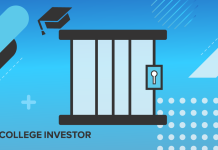- President Trump signed an executive order directing Education Secretary Linda McMahon to begin the process of shutting down the Department of Education.
- The move follows massive layoffs that reduced the agency’s workforce by nearly 50%.
- The department’s future remains uncertain, as a full closure would require congressional approval.
President Donald Trump signed an executive order on Thursday instructing Secretary of Education Linda McMahon to take all legally permissible steps to begin dismantling the U.S. Department of Education. The action is part of a broader effort by the administration to shift control of education back to the states.
The executive order, signed during an event attended by several Republican governors, does not immediately close the department, as Congress created the agency in 1979 and would need to vote on its elimination.
In the text of the order, Trump blames federal education oversight for stagnant student performance and asserts that states should be responsible for managing schools. The order also takes aim at diversity and gender programsdirecting McMahon to ensure that no federal education funds support activities promoting “diversity, equity, and inclusion” or “gender ideology.”
The order directs McMahon to plan for the department’s wind-down, assess which programs can be reassigned to other agencies, and take steps to minimize federal oversight of education.
This announcement comes just weeks after the administration laid off nearly half of the Department of Education’s workforce, reducing staff from over 4,100 to approximately 2,183.
The layoffs sparked legal challenges and concerns about the future of Congressionally mandated programs like Pell Grants and Student Loans.
What Happens Next?
Trump’s order lays the groundwork for reducing the Education Department’s footprintbut there are still major legal and logistical hurdles:
- Shifting responsibilities: The Department of the Treasury or another federal agency may assume control of student loans, while K-12 funding could be handed directly to states.
- Limitations: Any changes must comply with existing federal law and funding allocations, meaning Congress would need to approve certain aspects of the transition. Furthermore, federally funded programs like Pell Grants and student loans would continue.
- Legal challenges: Education and civil rights advocates are expected to challenge elements of the order, especially those restricting diversity and inclusion programs.
The order does not provide a timeline for shutting down the department, nor does it specify which federal agencies would take over responsibilities such as financial aid distribution, Title I funding, and oversight of student loan repayment programs.
However, current legislation in Congress gives us a glimpse of what could happen:

How This Impacts Students And Schools
The most immediate effects of Trump’s order will be felt in tasks handled by the Department directly, including oversight of civil rights protections in schools, management of contractors, and grant funding.
However, it’s important to realize that things like Federal Student Aid (which process student loans) is handled predominantly by government contractors.
K-12 Education
- Federal education programs, such as Title I funding for low-income schools and special education funding, may see changes in distribution methods.
- Without federal oversight, state control over education policy would increase, meaning disparities in funding and standards could widen.
- Schools that receive federal funding may face new restrictions on diversity, equity, and inclusion programs, depending on how the administration enforces the order.
Higher Education and Student Loans
- The $1.6 trillion federal student loan portfolio may be transferred to another agency, such as the Department of the Treasury.
- Financial aid processing and student loan forgiveness programs remain uncertain, as the department has already faced lawsuits over disruptions to income-driven repayment plans. However, most student loan work is handled by contractors.
- Borrowers may experience delays as any work that requires a Department of Education employee (versus a loan servicer) may be disrupted.
Trump’s administration argues that shifting federal education responsibilities to other agencies will increase efficiency, but critics warn that it could create confusion and disrupt services that millions rely on.
What Families Can Do Now
For now, the Department of Education remains in place, and families, students, and borrowers should continue using existing systems. However, given the administration’s aggressive push for change, it’s important to stay informed.
With the executive order now in place, the future of federal education policy remains uncertain, and major changes could take months or years to unfold.
Don’t Miss These Other Stories:
Can Trump Block Certain Workers From PSLF?
Can President Trump Claw Back Student Loan Forgiveness?
Stopping Tax Offsets Due To Student Loan Debt
Create your very own Auto Publish News/Blog Site and Earn Passive Income in Just 4 Easy Steps







